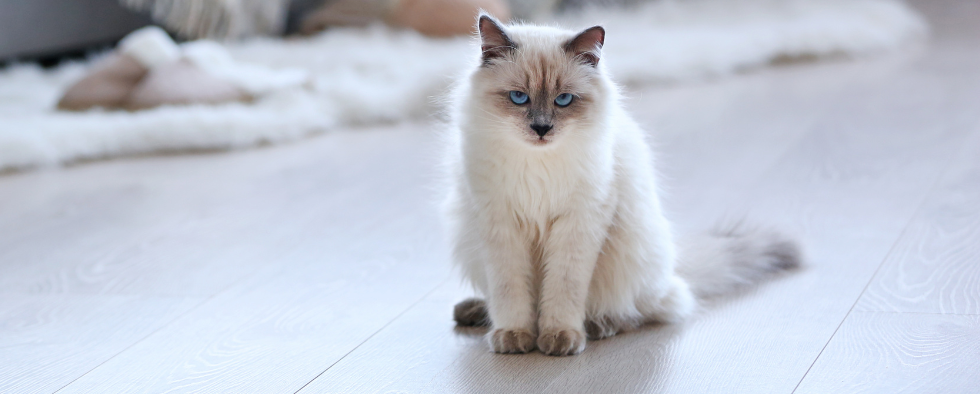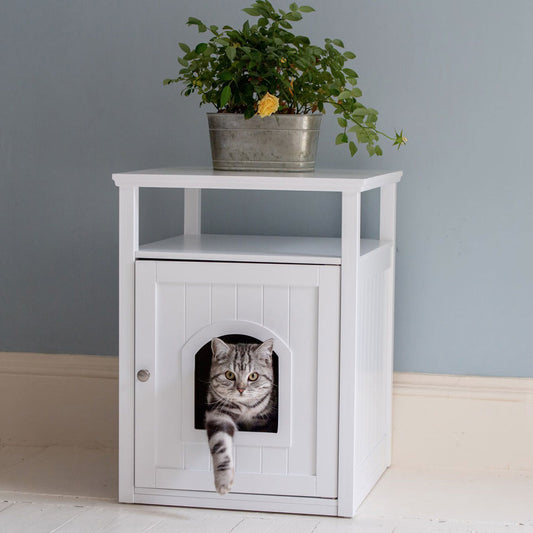The easy-going, loving nature of the Ragdoll Breed makes them a very popular pet. Their distinctive pointed coat and vivid blue eyes make them arguably one of the most beautful breeds. Whilst they can be independent at times, they tend to be sociable cats who are as good with other animals in the household as they are with their human family members. If you’ve never owned a Ragdoll before (perhaps you’ve never owned a cat at all?!), you may be wondering how best to look after them. Whilst they have many of the same needs as a normal cat, there are a few things that Ragdolls like and need in particular. Here we take a look at everything you need for your Ragdoll Cat and give a few tips on how to look after them:
Everything in a Size Large!
Ragdoll Cats are one of the largest domestic breeds and with this in mind, you should aim to buy your cat’s accessories in a size large. A large litter box that allows them to move around in comfortably and a large cat bed that they can stretch out on. Also consider a fairly tall scratch post - cats like to stretch out their muscles as they scratch so giving them a tall post will allow them to stretch out their bodies. Finally, a roomy carrier for those necessary trips to the vet.
- Cosy Cat Bed
- Litter Tray
- Tall Scratch Post
- Pet Carrier
Ragdoll Cat Grooming
Ragdolls are known for their distinctive good looks. The typical Ragdoll has a siamese-like pointed coat and has semi-long, fine hair. They don’t need as much grooming as a other longhaired breeds such as Persians, but they do need a moderate amount, a couple of times a week. Ensuring you have the right grooming tools is essential for keeping your cat’s coat healthy, knot-free and shiny. Ensure you have a range oc combs and brushes to enable you to keep their coats tangle free and smooth.
Grooming is a really good way to bond with your kitten. Start from the first week you get them home so it becomes normal to them and always brush them when they are relaxed, with gentle strokes. A good grooming regime will help stop shedding and hairballs developing too.
Ragdoll Cat Toys
Whilst Ragdolls have a more laid-back temperament compared to other feline breeds, they still like to hunt and play like other cats. Provide your cat with a series of cat balls or mice and perhaps a wand teaser toy. Playtime will offer bonding time and exercise and will help your cat sate their desire to “chase their prey”.
Ragdoll Cats are famously intelligent and will benefit from interactive toys too. The Catit Senses 2.0 range is ideal for Ragdolls, offering stimulating playtime. From puzzle toys that offer a tasty treat as a prize, to scratch and massage accessories; your cat is sure to love the Catit Senses 2.0 range.
Indoor or Outdoor Cat?
One of the most important considerations is whether they should be indoor or outdoor cats. Whilst there is a strong argument that cats, no matter the breed, should be able to live outdoors to aid their natural instinct to roam and hunt, you should definitely consider whether this is the best idea for your Ragdoll. The Ragdoll breed is known for their loving temperament - one of the things that makes them so desirable. This also makes them rather trusting in nature; they are not likely to defend themselves against other cats, making them more susceptible to disease and parasites.
Many people choose to keep their pedigree cats indoors and as long as you provide them with the accessories and furniture they need, they will live a happy and healthy life. Read our recent Indoor Cat Care Guide here.



























































![[color:cream]](http://www.lordsandlabradors.co.uk/cdn/shop/products/Kings-_-Queens-Victoria-4.jpg?v=1672398508&width=533)
![[color:cappuccino]](http://www.lordsandlabradors.co.uk/cdn/shop/products/Kings-_-Queens-Diana-260cm-6.jpg?v=1673523257&width=533)


































